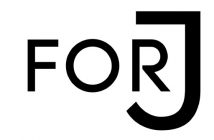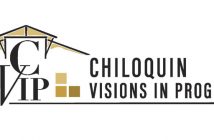There’s a great deal of enthusiasm about linking tangible assets such as gold and real estate to the digital universe of cryptocurrency. This is done by making digital tokens that stand for ownership of the assets. In addition, it can also offer people in other countries access to financial products they would not have known about otherwise because they are able to get onto decentralized finance platforms through this method. There are a lot of newbies out there who want to know more about crypto but don’t really understand what real world assets are or how they can be useful in the crypto world. Real-world assets play a crucial role in this context, providing a tangible link to the digital tokens. Do you fall into this category?
The Basics of Real-World Assets
Integrating real-world assets (RWAs) into cryptocurrency has garnered significant attention. These RWAs are digital tokens representing tangible assets like real estate, art, or traditional investments. Similar to other crypto tokens, they function on blockchain technology through smart contracts. A single RWA token can represent ownership of an entire asset or a fractional portion.
This innovative approach facilitates the inclusion of non-digital assets within the decentralized finance (DeFi) ecosystem. The tokenization of RWAs has experienced substantial growth, with the total value locked in DeFi exceeding nearly $5 billion by December 2023, signifying a burgeoning market segment.
Real world assets tokenization presents a rapidly evolving landscape within the cryptocurrency ecosystem. Several compelling use cases are emerging, including:
- Fixed Income Investments: RWA tokens can be backed by sovereign bonds, such as US Treasuries, enabling investors to earn a yield on their holdings through a tokenized representation.
- Fractional Ownership of Fine Art: Tokenization facilitates fractional ownership of valuable artworks, allowing for broader investor participation and potential income generation from the underlying asset.
- Real Estate Investment Democratization: RWA tokens unlock fractional ownership of real estate, enabling investors to participate in the market with lower entry points and potentially earn rental income.
- Enhanced Access to Collectibles: Various platforms leverage tokenization to democratize access to art and collectibles by facilitating fractional ownership for a wider investor pool.
- Industrial Asset Optimization: Companies are exploring industrial equipment and machinery tokenization, potentially enabling fractional ownership and usage rights, leading to optimized asset utilization.
Now, the exciting part: RWAs are bridging the gap between these traditional assets and the world of crypto and decentralized finance (DeFi). By creating digital tokens (RWAs) and representing these real-world assets on a blockchain, it becomes straightforward and safer to buy, sell, or trade on digital platforms. This blend of traditional and digital aims to make these assets more accessible, improve the trading process and make everything transparent for buyers and owners. It is a whole new way to deal with established, valuable things!
How Does It Work?
The process of tokenization leverages blockchain technology to transform real-world assets into digital tokens. This method facilitates fractional ownership and divides high-value assets like real estate, art, commodities, and intellectual property into smaller, more readily obtainable units. This approach fosters increased liquidity, transparency, and accessibility within the financial markets. As a result, real-world asset tokenization is a potential method for modernizing and democratizing traditional economic systems.
But why are these real world assets considered essential assets? Despite the growing interest, decentralized finance (DeFi) has remained mainstream, partly because it exists purely in the digital realm. But for those who have embraced DeFi, the benefits are undeniable. Users can swap currencies from the comfort of their homes, ditching traditional banks and their associated fees. Here are some other advantages!
➔One of DeFi’s biggest perks is supercharged liquidity! Thanks to blockchain’s magic, DeFi tokens can be bought and sold 24/7, offering users more flexibility when managing their investments.
➔By turning assets into digital tokens (tokenization), we can break them into smaller pieces (fractionalization). This method allows individual ownership and trading of these smaller parts, potentially making it easier to manage assets and opening the door for new investment opportunities.
➔RWAs can be used across different platforms using common formats (open standards). This eliminates the need for complex integrations, and these assets can be easily traded and managed on various DeFi applications.
Conclusion
Real world assets are well-established, valuable things you can touch. Think of them as proven investments, like real estate or artwork, that everyone agrees to hold worth. This widespread recognition makes them perfect for global financial dealings. These assets have economic value. Individuals or businesses can own these assets, and will bring future financial rewards. You can even turn ownership into cash by selling or licensing them out. The total value of these tangible assets is enormous!





